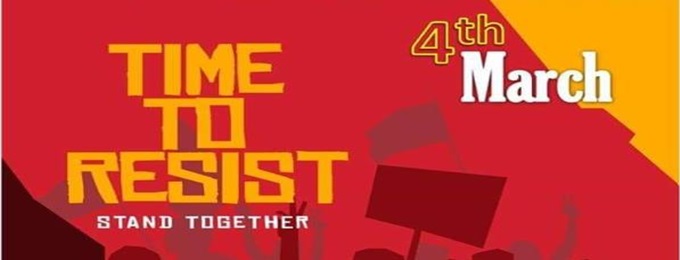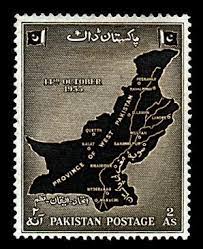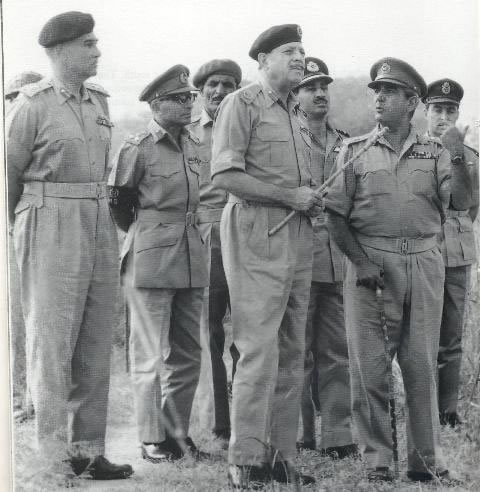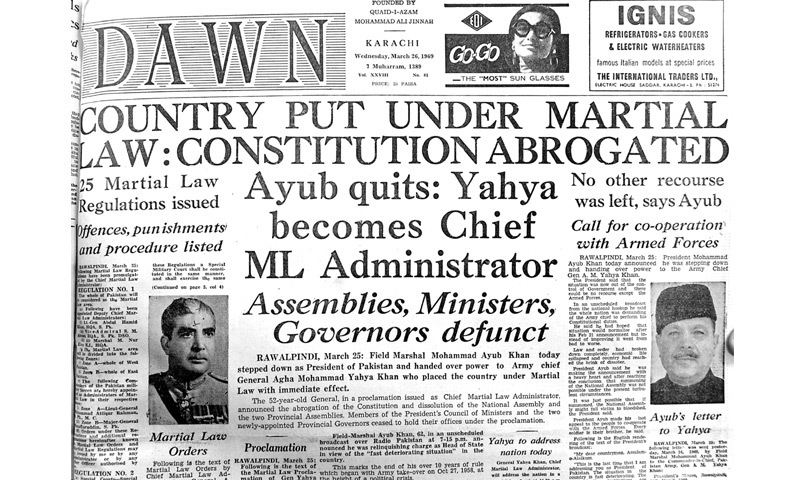
The police under the instructions of Martial law administration unleashed brutal force against the protesters leaving 17 of them injured and over 200 arrested at the place of the incident. This incident proved to be the day of the emergence of the Sindhi nationalist politics.
Thousands of Sindhi student activists outraged against the Unitary Provincial setup, imposed by Martial law regime, challenged the dictatorship of Field Marshal Ayoub Khan and launched a struggle against the One Unit in 1967. On the 4th of the March 1967, a massive procession taken out by the students marched from the University of Sindh, Jamshoro campus to Hyderabad. While the procession was on its way to the Hyderabad from Jamshoro, the police under the instructions of Martial law administration unleashed brutal force against the protesters leaving 17 of them injured and over 200 arrested at the place of the incident. This incident proved to be the day of the emergence of the Sindhi nationalist politics.
The 4th March, 1967 thus marked a watershed event in the post-Partition history of Sindh. It was the day when students were arrested en masse at the G.M. Barrage between Jamshoro and Hyderabad as they staged a rally against the One Unit scheme that had been in place in the country since 1955.
The protests were a culmination of the unrest among Sindhi students that had been simmering beneath the surface for a long time against One Unit. Its causes went deep into the humiliations suffered by Sindh and its people on cultural, political, administrative and economic levels.

Sindhi, a 2,500 year-old language, had no official status in what became the province of West Pakistan. It was stripped of all its rights as a medium of instruction, except in primary schools in the rural areas of Sindh. Sindhis were thus deprived of all opportunities of promoting their culture and language.
Politically and administratively, One Unit meant that Sindh disappeared as an entity and was reduced to looking to the capital Lahore for the pettiest matters.
Last but not the least, the demographic changes due to Partition, which saw mass influx of Muslim migrants from India and an outflow of Sindhi Hindus, meant that the major cities of the province, including Karachi, became virtual no-go areas for Sindhis as far as jobs and economic opportunities were concerned.
The movement itself was sparked when the Vice Chancellor of Sindh University, Hassan Ali Abdur Rehman, was dismissed in February 1967 by the Governor of West Pakistan, Nawab Amir Mohammad Khan Kalabagh.
Vice Chancellor of the university, was dismissed for his efforts for facilitating the admission of Sindhi students in professional colleges by allotting quotas for the far-flung districts of Sindh. The students agitated and demanded Hassan Ali Abdul Rehman to be reinstated.
On March 4, a general-body meeting of students of Sindh University, Liaquat Medical College, and Engineering College was planned in Sindh University’s City Campus in Hyderabad. Students were proceeding to the venue in university buses when the police encircled them near the G.M. Barrage. The students were beaten up and all 207 of them were arrested.
The police brutality resulted in mass protests all over the province. Although the dismissal order against the Vice Chancellor was not taken back, this moment, which came to be known as the 4th March Movement and is commemorated every year, gave rise to wide-scale political awakening in Sindh.
The authorities had been trying to divide the students on linguistic basis. In order to counter the unrest against the dismissal of the Vice Chancellor, the Commissioner of Hyderabad, Masroor Ahsan, had attempted to rally those who were regarded as leaders of Urdu-speaking students behind him.

It will not be wrong to say that 4th March crystallized the defiance of the people of Sindh against the treatment meted out to them by the dominant players of the country. Ground was prepared for it first of all by an unprecedented flourishing of Sindhi literature in all of its genres, especially poetry. Poets like Shaikh Ayaz felt and mirrored the pain of Sindh in their poetry.
Unfortunately, most historians and political specialists in and outside Pakistan, have failed to take due account of the landmark nature of the 4th March Movement.
 The Movement was an important component of the overall democratic upsurge in Pakistan that led to the falling of Ayub Khan’s dictatorship and abolition of One Unit. Even the books written on student movements in Pakistan seem to overlook the fact that Sindh, after having been wiped out from the country’s map by virtue of One Unit, struck back hard and reentered the political frame due to the defiance and courage of its students.
The Movement was an important component of the overall democratic upsurge in Pakistan that led to the falling of Ayub Khan’s dictatorship and abolition of One Unit. Even the books written on student movements in Pakistan seem to overlook the fact that Sindh, after having been wiped out from the country’s map by virtue of One Unit, struck back hard and reentered the political frame due to the defiance and courage of its students.
Many people who, as young men and women, took part in the widespread protest movement against the military rule of Ayub Khan in the late 1960s suggest that Ayub relinquished power after he was told what some of the protesters had started to call him. In 1968 at the height of the movement against him, young protesters in Karachi and Lahore began describing him as a dog (Ayub Khan Kutta!).
____________________
Source: Daily Dawn, Book It Now and some other websites